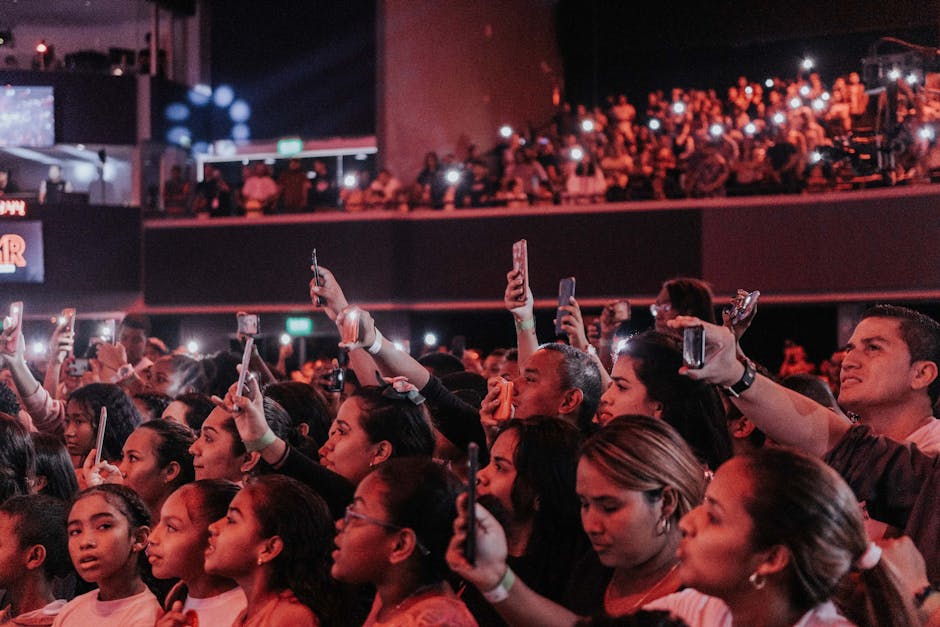Pageant Production
Welcome to the world of pageant production, an exciting and dynamic industry that showcases beauty, talent, and poise on a grand stage.
In this blog section, we aim to provide you with a comprehensive introduction to this thrilling profession. We'll be exploring the various facets of organizing, managing, and executing a successful pageant event, from talent scouting and selection, to judging criteria and event promotion.
Whether you're a seasoned pageant aficionado wanting to deepen your knowledge or a newcomer brimming with curiosity, this section has you covered.
Planning and Organizing: Key Elements for a Successful Pageant

Photo by Yogendra Singh on Pexels
Planning and organizing a pageant is no small feat. Investing time and effort into diligent preparation is essential for ensuring a successful event.
First and foremost, outline your objectives and establish a clear vision of the pageant's theme and style. This groundwork will help guide decision-making throughout the planning process.
Next, prepare a detailed timeline that includes not only the event date but also every crucial deadline — from registration cutoffs to rehearsal schedules. Meticulous scheduling is key to avoiding last-minute chaos.
Furthermore, assembling a dedicated, professional team is vital. Their roles will vary, including event managers, stage directors, sound and lighting technicians, and marketing specialists. Open communication channels and regular correspondence will keep everyone on track.
Finally, be ready to adapt and make alterations as needed. While planning is essential, scheduled changes will undoubtedly arise; demonstrating flexibility and resilience will contribute to a seamless experience.
Developing the Concept: Theme, Message, and Overall Vision

Photo by fauxels on Pexels
When it comes to developing the concept for a successful pageant production, it is essential to focus on three key elements: theme, message, and overall vision. These components will guide the production and ensure a well-rounded and impactful experience for both the participants and the audience.
First, selecting a theme will set the tone for the entire event and serve as a unifying thread throughout the various segments. Consider what themes might resonate with the target audience and reflect the values of your business.
Next, determine the message you want to convey through the pageant. This should be a clear and concise statement that encapsulates the essence of the event, leaving a lasting impression on those in attendance.
Finally, craft the overall vision for the pageant, encompassing aspects such as aesthetics, performance quality, and stage design. This vision should effectively bring together the theme and message, creating a cohesive and memorable production that will showcase the best of your business and its values.
Sponsorship and Fundraising: Securing the Resources for Pageant Production

Photo by fauxels on Pexels
Securing the necessary resources for a successful pageant production starts with a strong sponsorship and fundraising strategy. It is important to research potential sponsors that align with your event's values and have a history of supporting similar events or initiatives.
Once you've identified potential sponsors, develop a comprehensive sponsorship package that outlines the benefits they will receive, such as advertising space, logo placement, and tickets to the event. Be sure to highlight the exposure and positive brand association that the sponsor will receive by supporting your pageant.
In addition to sponsorships, fundraising initiatives can provide crucial funds for your event. Consider hosting a pre-event fundraiser, such as a gala, auction, or raffle, to engage with your community and build excitement around your pageant. It's essential to create a detailed fundraising plan, setting clear goals and timelines to ensure your event's financial success.
Venue Selection: Setting the Stage for the Big Event

Photo by Donald Tong on Pexels
Selecting the perfect venue is crucial in setting the stage for a successful pageant production. Not only does the location serve as the backdrop for the big event, but also influences the ambiance, accessibility, and overall experience for contestants, judges, and audience members alike.
When assessing potential venues, consider the capacity and layout of the space. Adequate seating, stage size, and backstage areas are essential to accommodate the needs of the event. Furthermore, evaluate the technical capabilities of the venue, including lighting, sound, and visual systems that are crucial to enhance the presentation and performances.
Accessibility is another key factor - ensure the venue is conveniently located and easily reachable via public transportation. Additionally, consider the availability of parking spaces and nearby amenities such as hotels, restaurants, and restrooms.
By taking these factors into account, you'll be on your way to securing an ideal venue that sets the stage for a memorable and successful pageant production.
Selecting and Training Contestants: Turning Dreams into Reality

Photo by Yogendra Singh on Pexels
Selecting and training contestants for a pageant is a crucial step in the journey towards turning dreams into reality. With the right mix of talented contestants, commitment and hard work, a successful pageant production becomes a memorable event not just for the participants, but for the audience as well.
To start the selection process, it's essential to have a clear understanding of the pageant's goals and objectives. This will help identify various judging criteria and choose those who best fit the pageant's vision.
Once the contestants are selected, a comprehensive training program is necessary to ensure they are confident, well-prepared, and able to showcase their unique qualities on stage. This involves grooming sessions, stage presence workshops, and public speaking coaching to help achieve peak performance.
Moreover, continuous support and motivation play a significant role in molding aspirants into winners. This includes mentoring by industry professionals alongside regularly tracking progress and providing constructive feedback for improvement.
In summary, by focussing on effective selection and meticulous training, we can enable contestants to effortlessly bring their dreams to life on the pageant stage.
Stage Design, Lighting, and Sound: Creating an Unforgettable Atmosphere

Photo by Marc Schulte on Pexels
When it comes to pageant production, creating a captivating atmosphere through stage design, lighting, and sound is vital for leaving a lasting impression. Each of these elements plays a fundamental role in the overall aesthetic and mood of the event.
To start, stage design serves as a visual foundation, setting the tone for the entire show. To achieve a dynamic and engaging space, consider utilizing different levels, platforms, and decorative elements that reflect the pageant's theme.
Next, lighting plays a transformative role. Employing strategic lighting techniques – like spotlights, color gels, and gobos – will not only draw attention to key moments but also evoke emotion and amplify the performers' presence.
Lastly, the right sound design will elevate the contestants' performances and evoke audience engagement. Meticulous attention to detail, from microphones to background music selection, is essential for seamless auditory experiences.
In conclusion, a harmonious blend of stage design, lighting, and sound will create a memorable atmosphere that showcases the pageant contestants and leaves the audience enchanted.
Promoting the Pageant: Attracting Audiences and Generating Buzz

Photo by Luis Quintero on Pexels
Pageant production has always been a spectacle - a grand display of talent, creativity, and the spirit of competition. Promoting the pageant is one essential element in ensuring its success, as it involves attracting audiences and generating buzz.
To reel in the crowd, a cohesive and captivating marketing campaign is vital. Utilizing social media, print ads, and billboards help create awareness and generate excitement.
Partnering with local businesses and influencers can also increase visibility, as their networks can amplify the event's reach.
Additionally, showcasing contestants and giving a sneak peak of their preparations through behind-the-scenes content helps pique the interest of not just their family and friends but also the wider audience.
Lastly, publicity stunts and catchy promotions add a unique flavor that keeps the event in the minds and hearts of people, encouraging them to attend and become part of the experience.
Final Preparations and Rehearsals: Perfecting the Show for the Big Night

Photo by cottonbro studio on Pexels
The big night is fast approaching, and it's crucial that we leave no stone unturned to make it an unforgettable experience. As we enter the final stage of preparations and rehearsals, it's essential to focus on perfecting every single aspect of the show.
From stage setup to lighting configurations, sound checks, and costume fittings, the final rehearsals must be closely coordinated to ensure a flawless production. The backstage crew, together with the performers, must be in sync, which calls for clear communication lines and specific roles assigned.
For our contestants, this is the perfect opportunity to get acquainted with the stage, routines, and transitions. Having multiple rehearsals allows them to become comfortable with their surroundings, iron out any issues, and ultimately shine brighter than ever on the big night.
At the end of the day, a smooth and well-organized event is all about teamwork, perseverance, and attention to detail.


